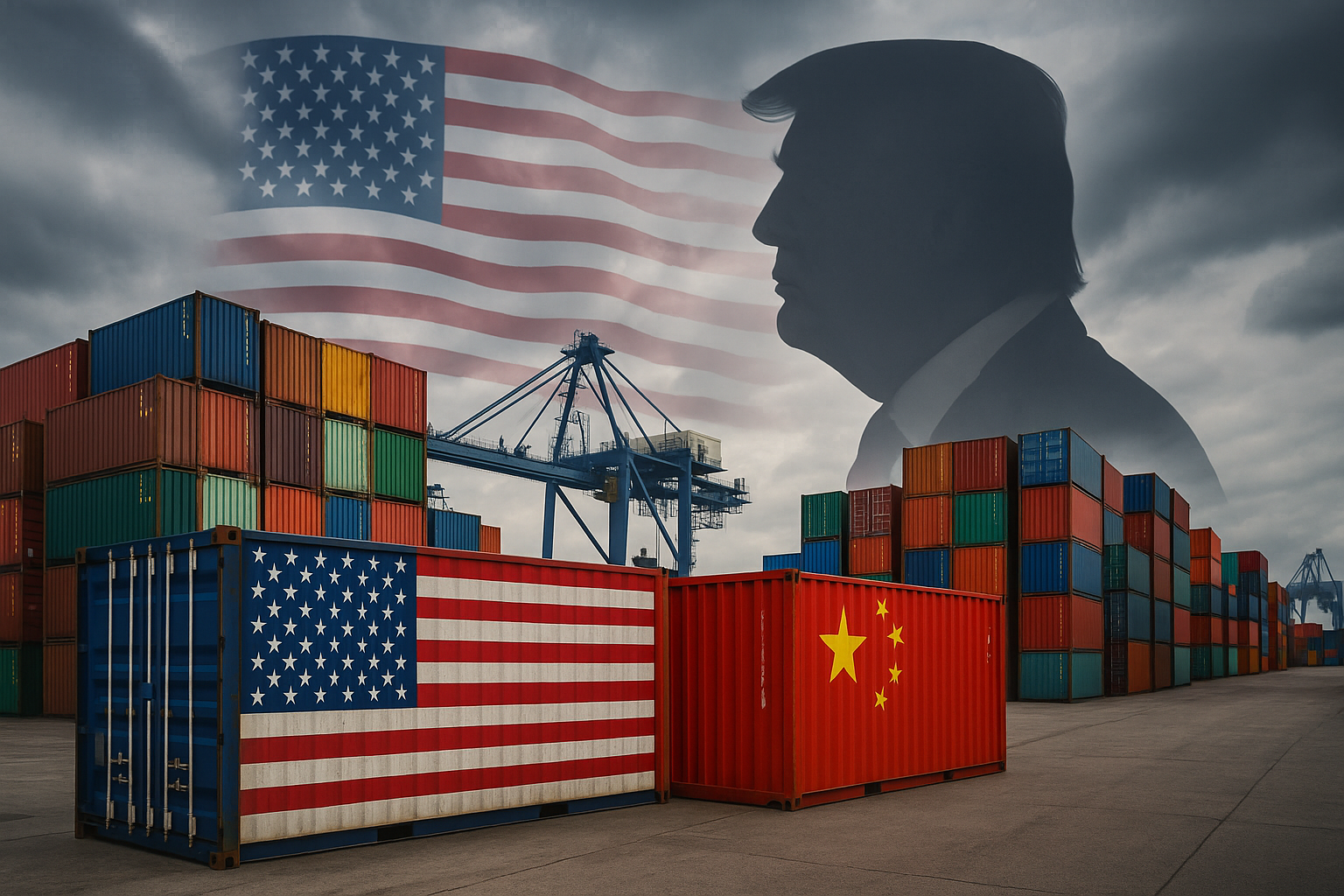President Donald Trump’s trade war faces a serious legal test after a federal appeals court ruled that most of his tariffs are illegal. The court said Trump overstepped his powers when he used the International Emergency Economic Powers Act (IEEPA) to impose sweeping levies. Judges stressed that only Congress can impose taxes like tariffs, not the White House. The decision strikes at the core of Trump’s trade policy, which relies heavily on fast, unilateral action. Trump has vowed to appeal to the Supreme Court, calling the ruling “highly partisan.”
The court temporarily allowed the tariffs to remain in place until mid-October, giving the administration time to seek a reversal. Businesses now face uncertainty, with many importers holding shipments to avoid duties that could later be refunded. If the Supreme Court sides against Trump, the government may need to return up to $100 billion collected from these tariffs. That refund would be a huge blow to Trump’s claim that tariffs are a financial windfall for the U.S. Treasury. The fight now moves from economic strategy to a legal showdown that could reshape the trade war with China and beyond.
Tariffs as a Tool in Trump’s Trade War
Trump has long used tariffs not just as economic measures but as political leverage. For example, he imposed a 50% tariff on Indian imports to pressure New Delhi over Russian oil purchases. He did the same with Brazil, hoping to influence its handling of former president Jair Bolsonaro’s prosecution. These moves show how Trump’s trade war extends far beyond China, touching allies and rivals alike.
However, without the emergency tariffs, his ability to negotiate will be weakened. Trade deals he struck that locked in these tariffs could collapse if the court invalidates them. Trump has also relied heavily on “reciprocal tariffs,” raising levies on imports from almost every nation, with some rates climbing above 30%. China, the second-largest source of U.S. imports, has been hit hardest. A Supreme Court loss would force Trump to rebuild his trade policy from scratch.
Retail Industry Feels the Tariff Shock
While the legal fight unfolds, Trump’s decision to scrap the “de minimis” exemption has already rattled the retail world. For nearly a decade, shipments under $800 entered the U.S. duty-free. That policy fueled e-commerce growth and allowed small businesses on platforms like Etsy, eBay, and Shopify to thrive. But with Trump’s executive order ending the exemption, every small parcel now faces tariffs and customs checks.
The sudden change has disrupted global supply chains. Post offices from Europe to Asia temporarily suspended shipments to the U.S. while adapting their systems. Retailers such as Tapestry, owner of Coach and Kate Spade, now expect profits to fall by hundreds of millions of dollars. Lululemon faces similar pressure, with analysts warning of sharp hits to earnings. For small entrepreneurs, the effect is devastating. Many are halting U.S. sales altogether as their margins collapse under new costs.
Consumers Caught in the Crossfire
For shoppers, the fallout is clear: higher prices and fewer choices. Imported goods from clothing to specialty foods now carry added costs, hitting low-income families the hardest. A recent study estimated U.S. consumers could pay nearly $11 billion more annually, or about $136 per household, due to the policy shift. That comes on top of existing inflation and high interest rates, leaving households stretched thinner.
Marketplace platforms, once powered by cross-border sellers, are bracing for a slowdown. Many small merchants are raising prices or closing their U.S. storefronts. Canadian bridal accessory makers, British artists, and Asian vendors all report losing large portions of their customer base. At the same time, giants like Amazon and Walmart may benefit. With warehouses in the U.S., they can absorb tariffs more easily and keep goods flowing. That dynamic could shift market share toward large retailers at the expense of smaller competitors.
The Future of Trump’s Trade Policy
The combination of court challenges and retail upheaval raises doubts about the sustainability of Trump’s trade policy. If the Supreme Court invalidates his emergency tariffs, his most powerful weapon in the trade war will vanish. At the same time, ending de minimis has created widespread disruption, hurting small businesses and burdening consumers. China remains central to the conflict, but the ripple effects touch allies, global retailers, and everyday shoppers.
Trump insists the tariffs are vital for national security and economic independence. His critics argue the measures are unlawful, chaotic, and harmful to U.S. competitiveness. The coming Supreme Court ruling will determine not just the fate of tariffs, but the balance of power between Congress and the presidency in setting trade policy. Until then, uncertainty reigns — in boardrooms, in retail, and in households navigating the costs of an ongoing trade war.
